Discover The Beauty of Peloponnese
Where is Peloponnese?
The Peloponnese is a peninsula located in the southern part of Greece. It is bordered by the Ionian Sea to the west, and separated from mainland Greece with the Corinth Canal to the east. The peninsula is home to many diverse mountain ranges, rivers and coastlines that offer stunning views and activities for travelers looking for an unforgettable adventure.
Is Peloponnese a summer or winter destination?
Peloponnese is an all-year round destination and one of the most famous if you are looking to visit Greece. The region is blessed with a Mediterranean climate and plenty of sunshine almost all year round. During the summer months it can get quite hot, but spring and autumn are more moderate temperatures. In winter you can enjoy the snow in some parts of the region as well as traditional festivals such as Carnival celebrations.
Olympia
Ancient Corinth
Mycenae
Monemvasia
Methoni
History of Peloponnese: From the ancient Greeks to the Greek Independence
The Peloponnese has a rich and long history, dating back to the ancient Greek civilization. The region is home to some of the world’s most famous archaeological sites, including Olympia, which was the site of the original Olympic Games in 776 BC. Ancient Mycenae was also located here and it is believed that Homer wrote about this city.
Peloponnese is home to the Greek legends of the past . From the epic battles at Thermopylae and Marathon to the tragic story of Helen of Troy, this region is full of stories that have been passed down through generations.
Peloponnese is also home to protagonists of the modern history of Greece, who fought for the Greek revolution and formed the Greek State as it is known today. The Greek War for revolution started from Peloponnese, and some famous names are connected to this region such as Theodoros Kolokotronis and Laskarina Bouboulina.
Peloponnese Top Historical Sites
Important Archeological Sites In Peloponnese
The Peloponnese is home to many important ancient sites and an ideal destination for anyone who wants to explore ancient history of Greece. The ancient site of Olympia, located in the western part of the peninsula, is one of the most visited by tourists. Here you can see ruins from the original Olympic Games as well as other monuments and structures from ancient Greece. Other notable sites include Mycenae, Tiryns and Epidaurus, which are some of the best-preserved sites in Greece.
Ancient Olympia: The Cradle of the Olympic Games
Where is ancient Olympia
Nestled amidst the lush green valleys of the western Peloponnese, the ancient city of Olympia stands as a testament to the grandeur of Classical Greece. Recognised as the birthplace of the Olympic Games (the first Olympic games where conducted here), this prestigious location invites travellers to step back in time and explore a world steeped in myth, legend, and athletic prowess.
- Archeological Site in Olympia
- Archaeological Museum of Olympia
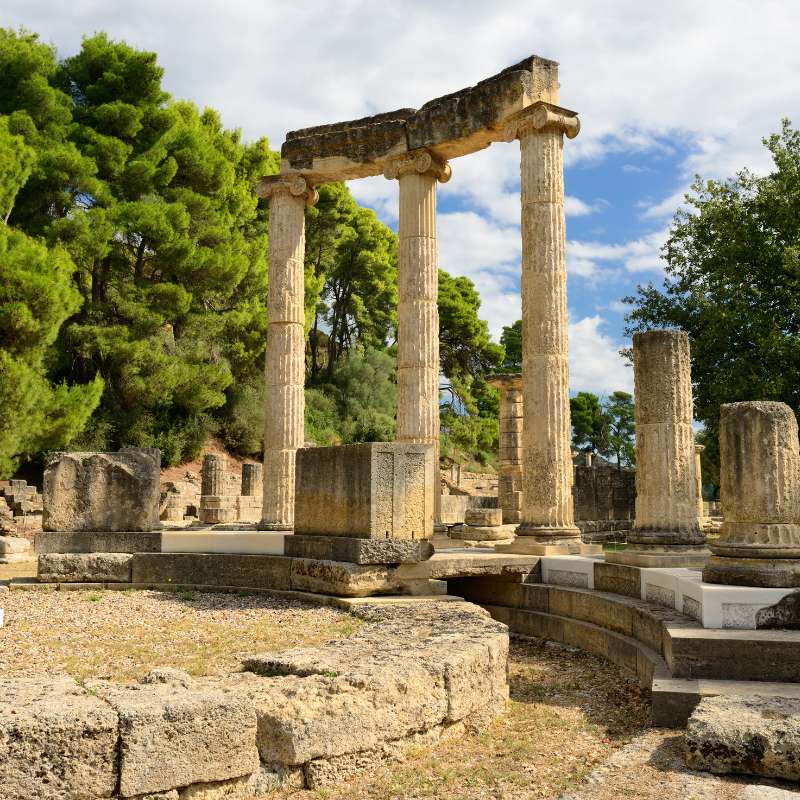
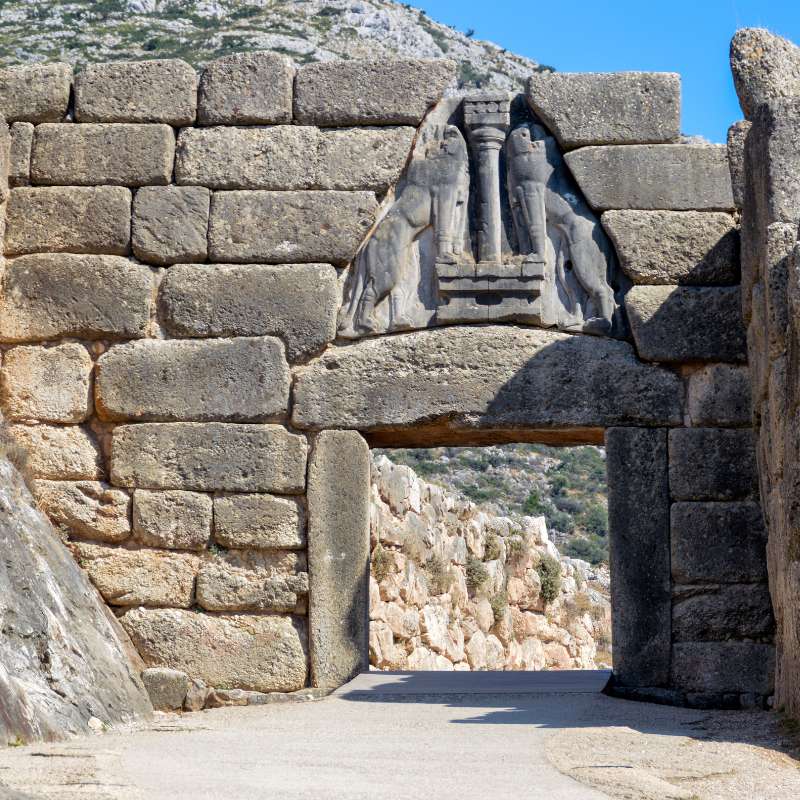
Mycenae: Echoes of a Legendary Past
Where is Mycenae
Located in the northeastern part of the Peloponnese, the ancient city of Mycenae was once the heart of the Mycenaean civilization, which flourished from the 15th to the 13th century BC. Today, Mycenae is a fascinating archaeological site overlooking the fertile Argolic plain, offering insight into an era that sowed the seeds of classical Greek culture.
- Archaeological Site of Mycenae
- The Treasury of Atreus
- Archaeological Museum of Mycenae
Methoni Castle: A Monument of the Medieval Past
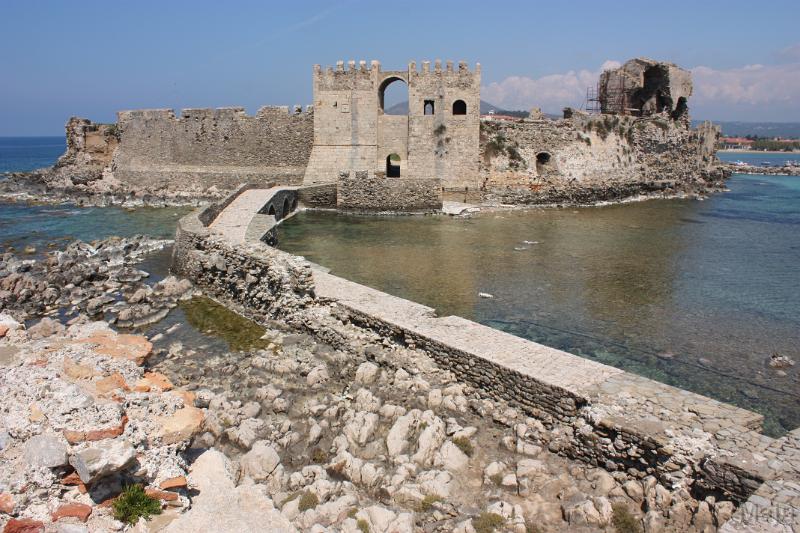
Where is Methoni Castle
Perched on the southwestern coast of the Peloponnese peninsula, the Castle of Methoni is a magnificent symbol of the region's turbulent past. Overlooking the azure Ionian Sea, this imposing fortress once served as a critical stopover on the maritime route to the East.

Historical Significance of Methoni Castle
Originally built by the Venetians in the 13th century, Methoni Castle is one of the largest and most well-preserved medieval fortresses in Greece. It witnessed numerous sieges and saw many rulers, from the Venetians to the Ottomans, all of whom left their marks and contributed to the Castle's rich tapestry of history.
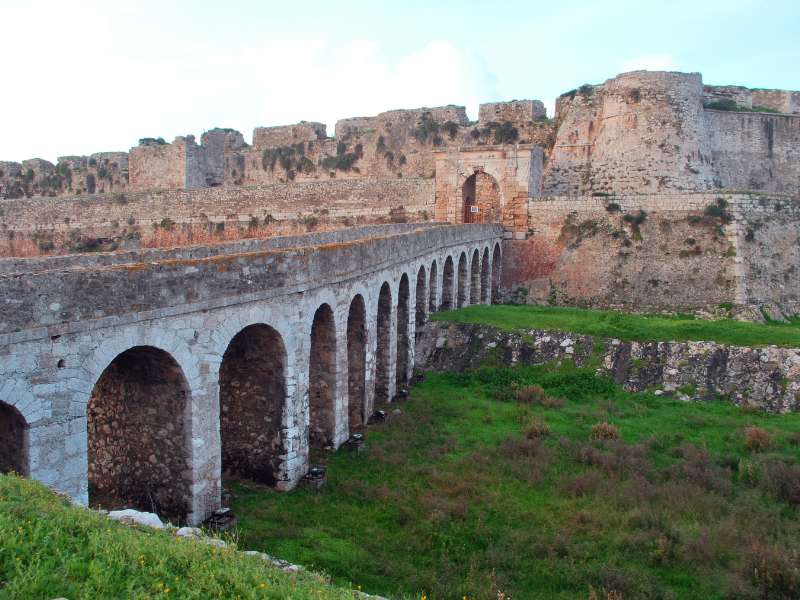
Interesting Features of Methoni Castle
One of the castle's most striking features is the Bourtzi, a sea tower built on a small islet connected to the main fortress by a stone bridge. It served as a prison in the Ottoman era, and its isolated location and formidable structure added an extra layer of defence to the stronghold. The main gate, a gothic arched entrance with the lion of Saint Mark, emblem of Venice, is another testament to the castle's past.
Inside the walls, visitors can explore the ruins of the old town, which includes remnants of houses, streets, and public buildings. The fortress also houses a church dedicated to Saint Saviour.
Visit Methoni Castle
A visit to Methoni Castle is a step into the pages of history. As you walk through the vast fortress, with its bastions, ramparts and the whispers of history in every stone, you can almost feel the presence of knights, soldiers, and prisoners who once inhabited these grounds. Whether you're a history buff or simply someone who appreciates stunning architecture and breathtaking views, a visit to Methoni Castle is a compelling addition to your Peloponnese itinerary.
Ancient Corinth: A Crossroads of Civilizations
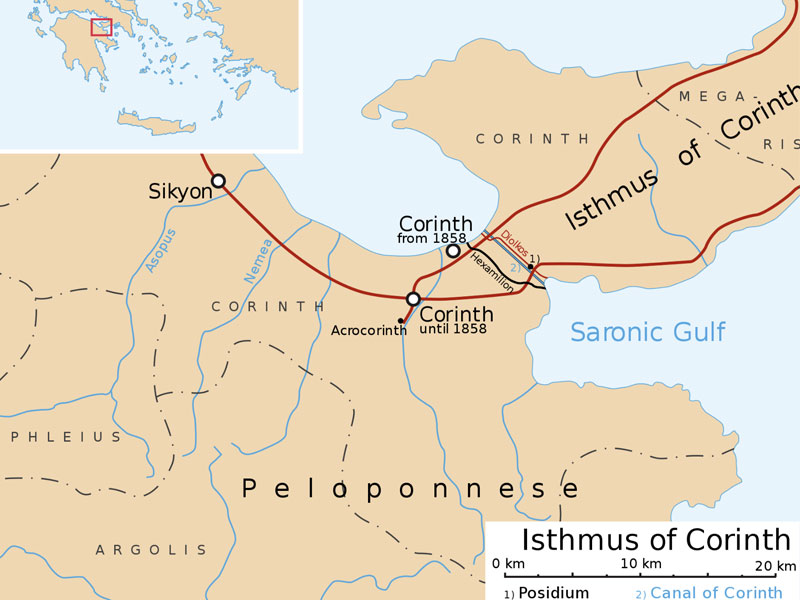
Where is Ancient Corinth
Nestled on a narrow strip of land connecting mainland Greece with the Peloponnese, Ancient Corinth is a city of unsurpassed historical significance. This strategic location at the crossroads of land and sea routes made Corinth a powerful city-state in antiquity and a bustling centre of trade, culture, and learning.
Archaeological Site of Ancient Corinth
The archaeological site of Ancient Corinth is a treasure trove of ancient Greek and Roman architecture. The Temple of Apollo, one of the oldest stone temples in Greece, stands as a striking reminder of Corinth’s prosperity during the 6th century BC. The remnants of the Ancient Agora, or marketplace, still evoke images of bustling traders and lively debates amongst philosophers.
The Bema, or speaker’s platform, bears a special historical significance as it was here that the Apostle Paul is believed to have delivered his famous speeches to the Corinthians, forever linking the city to the early Christian Church.
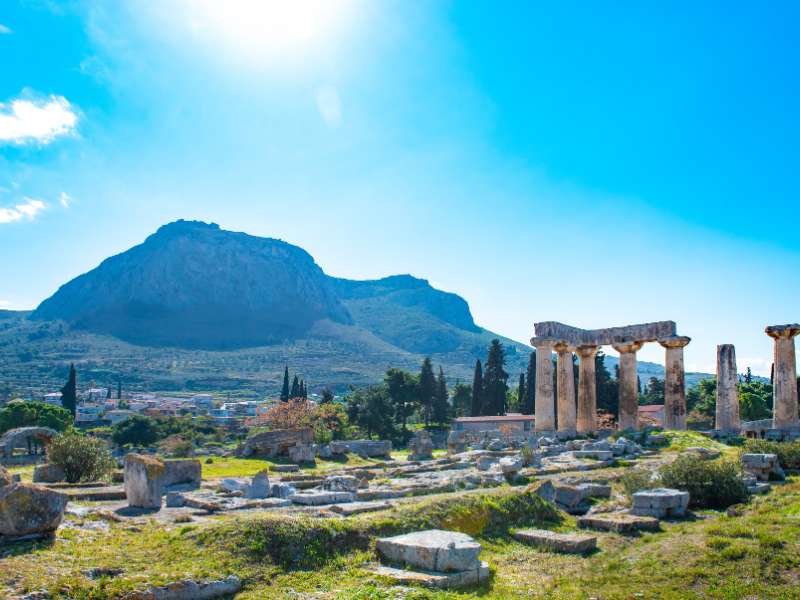
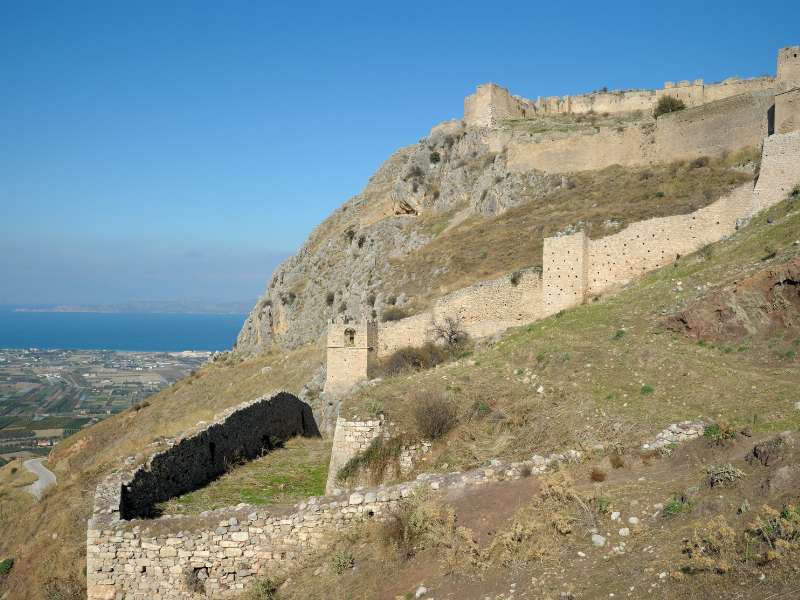
The Acrocorinth
Overlooking the city are the imposing fortifications of the Acrocorinth, the city’s acropolis. A climb to its peak rewards you with panoramic views across the Gulf of Corinth and the Peloponnese, making it a much-beloved spot among photographers and nature enthusiasts.
The Archaeological Museum of Corinth
The Archaeological Museum of Corinth houses a myriad of artefacts discovered during excavations, providing a tangible connection to the city’s glorious past. Highlights include beautifully crafted mosaics, terracotta figurines, and an impressive collection of Mycenaean pottery.
A visit to Ancient Corinth offers a deep dive into centuries of history, culture, and mythology, from the glory of ancient Greece to the rise of the Roman Empire and the early days of Christianity. It’s a must-visit destination for anyone looking to explore the rich tapestry of the Peloponnese’s historical landscape.

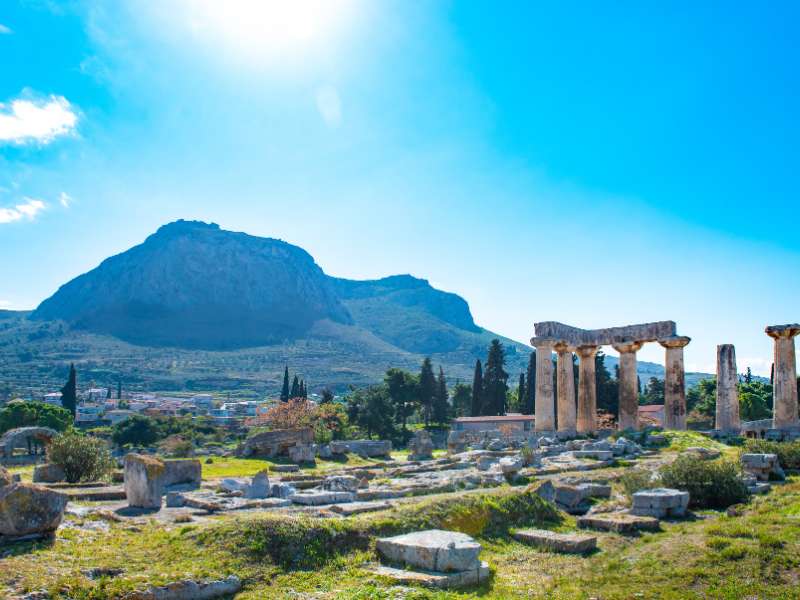
Ancient Corinth: A Crossroads of Civilizations
Where is Ancient Corinth
Nestled on a narrow strip of land connecting mainland Greece with the Peloponnese, Ancient Corinth is a city of unsurpassed historical significance. This strategic location at the crossroads of land and sea routes made Corinth a powerful city-state in antiquity and a bustling centre of trade, culture, and learning.
- Archaeological Site of Ancient Corinth
- The Acrocorinth
- The Archaeological Museum of Corinth
Mystras: The Byzantine Ghost City
Where is Mystras
Perched on the slopes of Mount Taygetos, near ancient Sparta in the Peloponnese, lies the hauntingly beautiful city of Mystras, the once byzantine fortified town. Once a bustling Byzantine capital, today Mystras is a UNESCO World Heritage Site that offers a unique journey into the world of the late Byzantine Empire.
- Archaeological Site of Mystras
- Archaeological Museum of Mystras
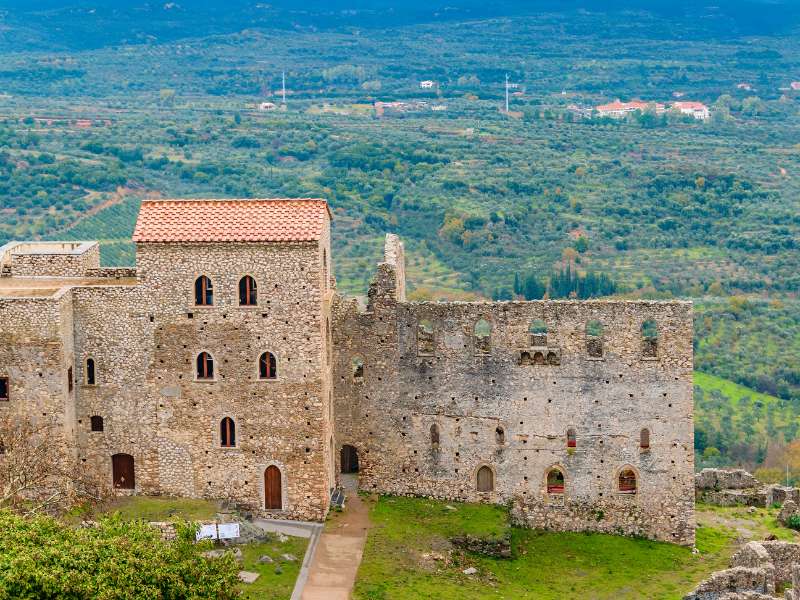
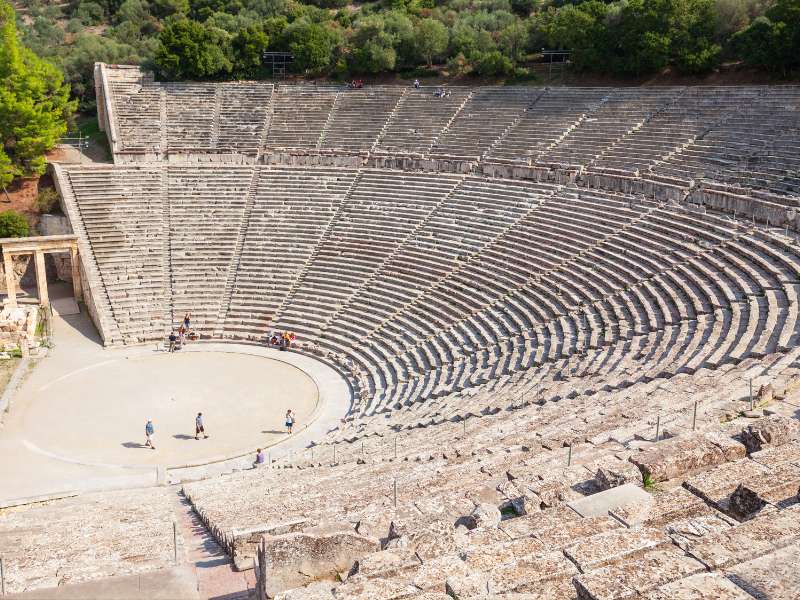
Epidaurus: The Ancient Theatre That Echoes Through Time
Where is Epidaurus
Situated on the fertile plains of Argolis in the eastern Peloponnese, the ancient city of Epidaurus is renowned as a significant cultural, medical, and spiritual centre of antiquity. But it’s the city’s breathtaking Theatre that genuinely captures the imagination of its visitors.
- The Ancient Theatre of Epidaurus
- The Archaeological Site of Epidaurus
- Archaeological Museum of Epidaurus
Monemvasia: The Medieval Fortress Town Suspended in Time
Natural Wonders of Peloponnese
Food & Drink In Peloponnese

Nafplio: How to get there and things to do
Once the capital of modern Greece, Nafplio enchants visitors with its Venetian architecture, picturesque waterfront, and labyrinthine old town. Don’t miss Palamidi Fortress, which offers panoramic views of the city and the surrounding sea.
- History of Nafplio
- Things to Do in Nafplio
- How to Get to Nafplio from Athens
Exploring Pylos: A Gem of the Peloponnese
Mani: The Wild Heart of the Peloponnese
Discovering Kalamata: The Mediterranean's Hidden Treasure

The culture of Peloponnese
The people of Peloponnese are friendly and welcoming hosts. In this region you will find some of the best traditional food in Greece, from seafood to local specialties such as “spanakopita” (spinach pie) and “loukoumades” (deep-fried dough balls).
- The famous olive groves and wineries of Peloponnese
- Top Destinations in Peloponnese
Frequently Asked Questions if you are looking to Visit Peloponnese
Yes, there is an international airport in the Peloponnese – Kalamata International Airport, which is the only international airport. It has regular connections to Athens and other European cities.
What are the most perfect beaches in Peloponnese?
The most perfect beaches in the Peloponnese are Navarino Bay, Voidokilia Beach, Elafonissi Beach and Balos Beach. All of these beaches boast stunning surroundings and crystal-clear waters, making them ideal for relaxing or swimming.
The best way to get around Peloponnese is by car. This gives you the freedom to explore at your own pace and take in all the sights that this region has to offer. If you don’t have a car, there are regular bus services operating between towns in the Peloponnese.
Simos beach is located on the island of Elafonissi in the Peloponnese. It is known for its stunning white sand and turquoise waters, making it an ideal spot for swimming and sunbathing. The Sbeach can be accessed via a short walk from the nearby village of Elafonissi.
Peloponnese is not a mass tourism destination. It boasts a wealth of attractions, ranging from the ancient ruins of Olympia and Mystras to the pristine beaches in Kalamata, but its popularity has not yet been fully realised. As such, it remains relatively untouched by commercialisation. This makes it an ideal place to visit for those looking for a more tranquil and authentic Greek experience and at the same time save money from their vacations.
